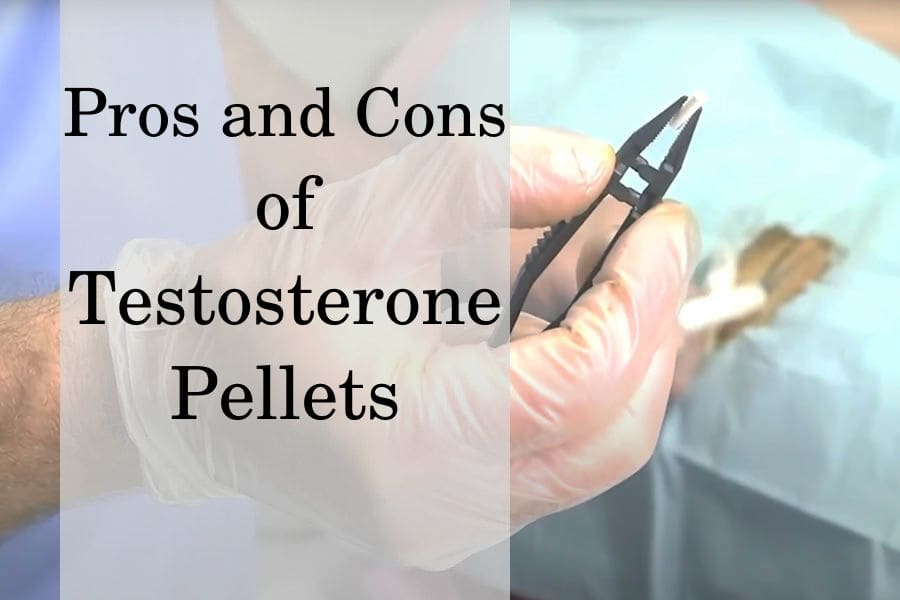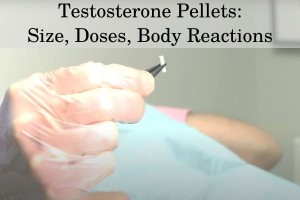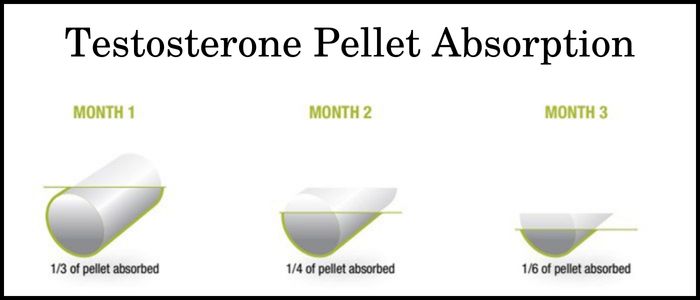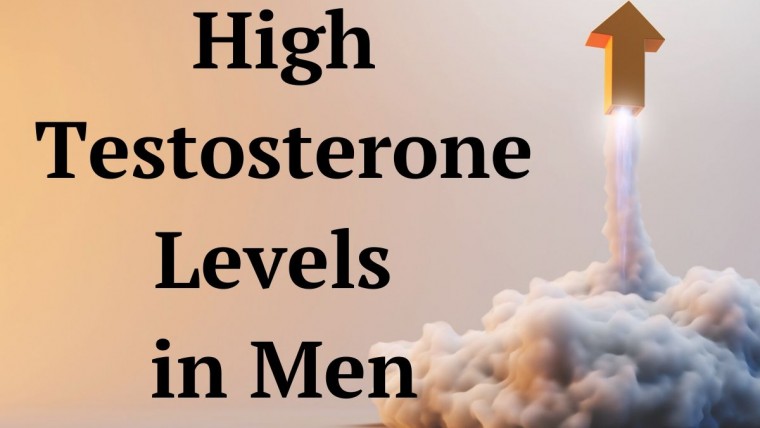In this article
Testosterone pellets are arguably one of the most convenient forms of testosterone replacement therapy (TRT).
They were invented shortly after the discovery of testosterone and received FDA approval in 1972, but it wasn’t until 2008 when they were officially marketed for the management of low T.
Due to the relatively low popularity compared to other forms of TRT, there are fewer studies on testosterone pellets. More research is needed to clarify some of their pharmacokinetics but so far the studies show favorable results in men with low T.
Similarly to other forms of TRT, pellets can successfully relieve the most debilitating symptoms of male hypogonadism. To do so, a doctor will have to insert the pellets under your skin and the implant will release steady levels of T over several months.
This makes them one of the most convenient forms of TRT, but pellets may also have some disadvantages including price and not being able to administer the medication on your own.
Overall, testosterone pellets can be worth it depending on your preferences and the dosage you need. Testosterone pellets are most appropriate for patients who have already been on another form of TRT and the optimal testosterone dose is already well-established.
What are testosterone pellets?
Testosterone pellets are made of crystalline testosterone which slowly breaks down when implanted and releases testosterone in the body for prolonged periods.
Crystalline testosterone means that the T is converted into a solid and compressed into a pellet. Usually, they also contain stearic acid and polyvinylpyrrolidone.
Thus, in comparison to other TRT forms such as testosterone injections, the testosterone in pellets is not in the form of ester.
The pellets are similar to grains of rice and can be described as small cylinders with a diameter of 3.2 mm by 9 mm in length.
Currently, Testopel is the only FDA-approved brand of testosterone pellets. Each testosterone pellet in Testopel contains 75 mg of testosterone.
Testosterone pellets must be implanted under your skin in order to work. A medical professional will have to insert the pellets under your skin, where the medication will slowly dissolve over several months.
In rare cases, the pellet can get rejected by your body due to an allergic reaction or an infection. In such cases, it will extrude due to the inflammatory response by your body. The pellet may also extrude if it was inserted too superficially into the skin.
Despite that testosterone, pellets are quite safe, and side effects are rare, as long as they were implanted correctly and you follow the recommendations after the procedure.
Procedure for insertion of testosterone pellets
The procedure for the implantation of testosterone pellets is rather short, simple, and safe. It takes no more than 10 minutes and does not require a hospital stay or stitches.
The pellets are usually implanted in the upper hip or the buttocks areas. Your doctor will disinfect the area and inject it with a local anesthetic to reduce any potential discomfort.
Then they will make a small incision and place the pellets under your skin. Usually, 2-6 pellets (150 mg – 450 mg) are implanted during the procedure but the number can be up to 12 depending on the dosage. Each 75 mg pellet releases about 0.5 mg/day of testosterone.
The effects generally last around 4 months on average, so the procedure is usually repeated every 3-6 months.
Eventually, the pellets dissolve completely. If the need arises, the pellets can be easily removed by performing another incision.
What could happen after pellet insertion?
The most common side effects during or shortly after the procedure include pain, swelling, and bruising at the site of the incision. These symptoms usually go away within 2-3 days. The area may also be tender for up to 2 weeks after the procedure.
Patients may also develop an infection or the pellet may extrude due to improper implantation
If the pain and swelling continue longer and there is leakage from the wound, make sure to contact your doctor as there could be an infection. In such cases, you may have to take an antibiotic.
Thankfully, research shows that both infections and extrusions are rare – 0.3% and 1% respectively.
These risks can be minimized by following several steps and specific rules after the procedure including:
- After the procedure, you can apply an ice pack on the wound for 8-10 mins
- Keep the wound completely dry and avoid showering for 24 hours
- Apply band-aids on the wound for at least 48 hours
- Avoid soaking in water (baths, tubs, pools, etc.) for at least 72 hours
- Avoid overexertion and strenuous exercise for at least 72 hours
- Do not remove any steri-strips for at least a week after the procedure
- Avoid massaging the spot if you have had a pellet insertion in the last 6 months
How long does it take for testosterone pellets to work?
Due to the slow release of testosterone from testosterone pellets, it will take a while before you start feeling the improvements in your low T symptoms.
The timeline of effects during TRT is quite different for testosterone pellets compared to other forms of TRT.
In fact, it may take as much as 2-4 weeks until the testosterone released by the pellets reaches therapeutic concentrations. Furthermore, 6 months is the maximum during which the medication can maintain such concentrations.
The half-life of the pellets is estimated to be 2.5 months. Therefore, traces of testosterone from the pellets can remain in your system for as long as a year.
What happens if testosterone pellets don’t work properly?
If testosterone pellets fail to increase your testosterone levels, then your doctor may recommend another form of TRT. In such cases, the testosterone pellets will have to be removed.
According to research, testosterone pellets are not the most frequently chosen form of TRT but the level of satisfaction amongst patients who take pellets is similar to other forms of testosterone treatment.
The price is one of the potential drawbacks since 10 pellets can cost as much as $1100. Thus, the monthly price of testosterone pellets can reach $100-$300 depending on the dosage.
Another drawback is that due to the slow release of T from testosterone pellets, it is much harder to dose them correctly for new patients.
What are the benefits of testosterone pellets?
The benefits of testosterone pellets are the same as those achieved with other forms of TRT.
They include improving all symptoms of low T except for infertility. TRT may even worsen infertility as it suppresses the endogenous production of testosterone in the testes. Benefits of TRT and testosterone pellets include:
- increase in muscle mass
- weight loss
- reduced abdominal fat
- increased energy levels
- improved mood
- better erections
- improved sexual health
In the long term, maintaining normal testosterone levels can also provide support for the cardiovascular system and bone mineral density.
Do testosterone pellets have side effects?
The side effects of testosterone pellets are the same as all other forms of TRT. They usually occur with higher doses and include infertility, an increase in red blood cells, an increase in body hair, and breast tenderness or gynecomastia.
However, the rate at which the side effects occur may be influenced by the TRT form. Studies report that long-acting forms of TRT have a lower risk of certain side effects such as increased red blood cell count.
Despite the fact that testosterone pellets and other forms of TRT cause body fat loss, your body weight may fluctuate because testosterone can also cause muscle gain and water retention.
Testosterone pellets can also cause itching and discomfort around the insertion spot.
The medication does not cause bloating, fatigue, or any other form of general discomfort. Currently, the evidence suggests that TRT including testosterone pellets does not cause cancer.
Yet people who already have a history of hormone-sensitive cancers such as prostate and breast cancer should avoid taking testosterone pellets or any other form of TRT.
Are testosterone pellets for women safe and effective?
Testosterone pellets are FDA-approved for use only in men with low T. Currently, there is not enough research to recommend testosterone pellets or any other form of TRT for women.
Nevertheless, a doctor can legally prescribe TRT for a woman as long as the specialist has decided it will be beneficial for the patient.
Scientists do consider prescribing TRT to women and recommend it only for postmenopausal women with specific indications such as hypoactive sexual desire disorder (HSDD).
HSDD is a condition that manifests with a complete lack of libido and sexual fantasies which has a negative effect on the quality of life of the patients. It usually affects postmenopausal women and scientists suspect that the cause is associated with the hormonal decline which occurs in this period.
In such cases, testosterone may help increase libido, lubrication, and sexual satisfaction. Researchers recommend a trial course with testosterone pellets or get that lasts for 3-6 months and involves physiological doses.
Other forms of TRT are not suitable as they can lead to a rapid increase in testosterone levels, which is generally unwanted in female patients.
TRT in women should continue only if there were insignificant benefits during the first 6 months and it was well-tolerated.






